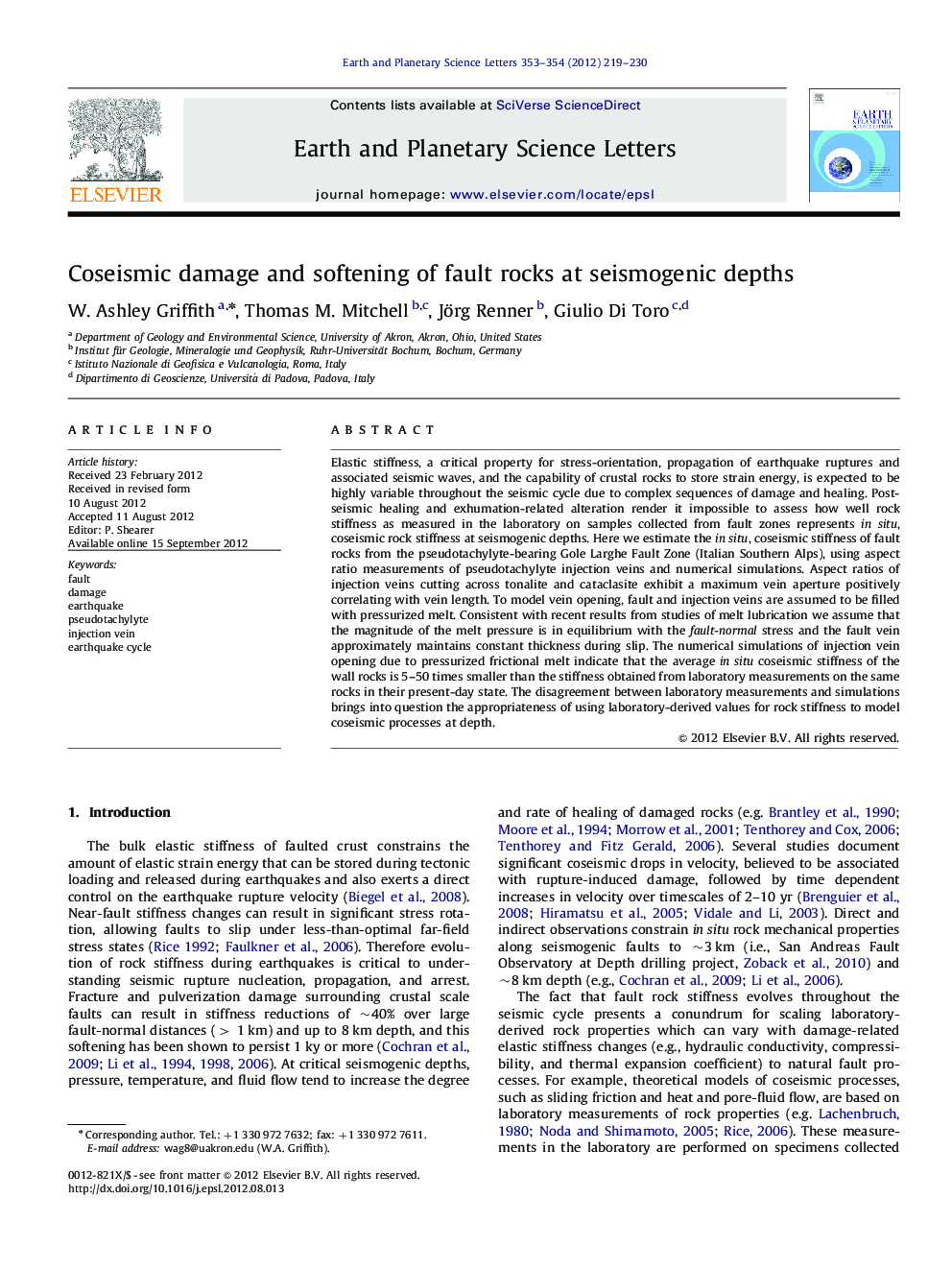| کد مقاله | کد نشریه | سال انتشار | مقاله انگلیسی | نسخه تمام متن |
|---|---|---|---|---|
| 6430504 | 1634796 | 2012 | 12 صفحه PDF | دانلود رایگان |

Elastic stiffness, a critical property for stress-orientation, propagation of earthquake ruptures and associated seismic waves, and the capability of crustal rocks to store strain energy, is expected to be highly variable throughout the seismic cycle due to complex sequences of damage and healing. Post-seismic healing and exhumation-related alteration render it impossible to assess how well rock stiffness as measured in the laboratory on samples collected from fault zones represents in situ, coseismic rock stiffness at seismogenic depths. Here we estimate the in situ, coseismic stiffness of fault rocks from the pseudotachylyte-bearing Gole Larghe Fault Zone (Italian Southern Alps), using aspect ratio measurements of pseudotachylyte injection veins and numerical simulations. Aspect ratios of injection veins cutting across tonalite and cataclasite exhibit a maximum vein aperture positively correlating with vein length. To model vein opening, fault and injection veins are assumed to be filled with pressurized melt. Consistent with recent results from studies of melt lubrication we assume that the magnitude of the melt pressure is in equilibrium with the fault-normal stress and the fault vein approximately maintains constant thickness during slip. The numerical simulations of injection vein opening due to pressurized frictional melt indicate that the average in situ coseismic stiffness of the wall rocks is 5-50 times smaller than the stiffness obtained from laboratory measurements on the same rocks in their present-day state. The disagreement between laboratory measurements and simulations brings into question the appropriateness of using laboratory-derived values for rock stiffness to model coseismic processes at depth.
⺠Aspect ratios of pseudotachylyte injection veins vary depending on rock type. ⺠We hypothesize that vein geometry reflects coseismic stiffness of fault rocks. ⺠Numerical models of vein opening estimate very low coseismic stiffness. ⺠Our results show that coseismic damage is significant even at seismogenic depths. ⺠Lab tests show post-seismic healing completely alters rock mechanical properties.
Journal: Earth and Planetary Science Letters - Volumes 353â354, 1 November 2012, Pages 219-230